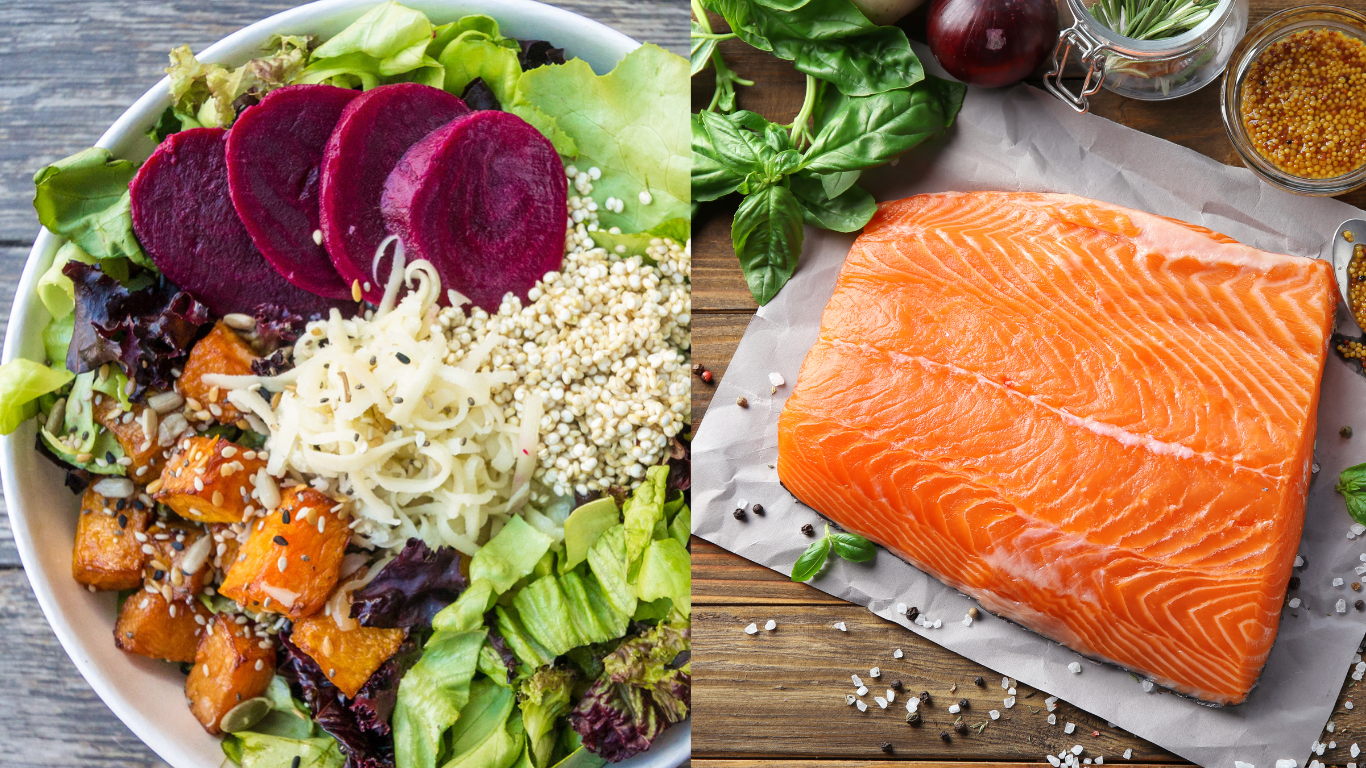Exploring Vegan Cuisine: The Art of Vegan Raw Fish Dishes
In the realm of vegan cuisine, creativity knows no bounds. One of the most intriguing innovations in recent years has been the development of vegan alternatives to traditionally seafood heavy dishes, including raw fish preparations. While the concept might seem contradictory at first glance, the ingenuity of vegan chefs has led to the creation of dishes that capture the essence and flavors of raw fish without any animal products.
Understanding Vegan Raw Fish Alternatives
At its core, vegan raw fish dishes are about recreating textures, flavors, and sensations using plant-based ingredients. Ingredients like hearts of palm, watermelon, tomato, and marinated tofu are often used to mimic the delicate texture and umami-rich taste of raw fish. These ingredients are carefully prepared and seasoned to resemble the experience of eating raw fish, offering vegans and those exploring plant-based diets a chance to enjoy dishes they may have once thought inaccessible.
Historical and Cultural Influences
The concept of vegan raw fish dishes draws inspiration from diverse culinary traditions around the world. In Japanese cuisine, for example, dishes like sashimi and sushi are highly revered for their simplicity and focus on showcasing the natural flavors of fresh fish. Vegan chefs have adopted these principles, applying them to plant-based ingredients to create dishes that pay homage to the originals while catering to modern dietary preferences.
Nutritional Considerations
From a nutritional standpoint, vegan raw fish dishes can offer a wealth of benefits. Plant-based ingredients used in these dishes are typically rich in vitamins, minerals, and antioxidants, providing essential nutrients without the cholesterol and saturated fats often found in animal products. For instance, hearts of palm are low in calories and packed with fiber, making them a nutritious base for vegan sashimi.
Sustainability and Environmental Impact
One of the driving forces behind the rise of vegan raw fish dishes is sustainability. The fishing industry is associated with environmental concerns such as overfishing and habitat destruction. By opting for plant-based alternatives, individuals can reduce their ecological footprint and support sustainable food practices. Vegan raw fish dishes promote awareness of these issues while offering a delicious and ethical dining option.
Preparing a Vegan Raw Fish Dish: Techniques and Ingredients
The preparation of vegan raw fish dishes involves a combination of culinary skill and innovative thinking. For example, hearts of palm can be thinly sliced and marinated in a mixture of soy sauce, sesame oil, and seaweed flakes to create a vegan version of sashimi. Watermelon or tomato can be shaped and seasoned to mimic the appearance and texture of tuna or salmon, providing a visually appealing and flavorful dish.
Flavors and Seasonings: Enhancing the Experience
One of the key aspects of vegan raw fish dishes is the careful balance of flavors and seasonings. Ingredients like soy sauce, rice vinegar, mirin, ginger, and wasabi are used not only to enhance the taste but also to create a harmonious blend of flavors that evoke the freshness and complexity of traditional raw fish dishes. The use of seaweed and sesame seeds adds a hint of oceanic essence, further enhancing the authenticity of the vegan dish.
Presentation and Dining Experience
Beyond taste, the presentation of vegan raw fish dishes plays a crucial role in creating a memorable dining experience. Chefs often focus on meticulous plating, arranging the vegan sashimi or ceviche in an artful manner that reflects the sophistication and elegance of traditional raw fish presentations. Garnishes such as microgreens, edible flowers, and citrus zest add a touch of color and freshness, elevating the dish to a culinary masterpiece.
The Future of Vegan Raw Fish Cuisine
As plant-based diets continue to gain popularity and awareness of sustainability grows, the future of vegan raw fish cuisine looks promising. Chefs and food innovators are constantly experimenting with new ingredients and techniques to push the boundaries of vegan gastronomy. With advancements in food science and a growing appreciation for plant-based alternatives, the diversity and quality of vegan raw fish dishes are expected to evolve, offering even more options for vegans and food enthusiasts alike.
Recipes: Creating Vegan Raw Fish Dishes at Home
For those eager to explore vegan raw fish dishes at home, here are two popular recipes to try:
Vegan Watermelon “Tuna” Sashimi
Ingredients:
- 1 small seedless watermelon
- 2 tbsp soy sauce
- 1 tbsp sesame oil
- 1 tsp rice vinegar
- 1 tsp grated ginger
- Sesame seeds and sliced green onions for garnish
Instructions:
- Slice the watermelon into thick rectangles resembling tuna slices.
- In a bowl, mix soy sauce, sesame oil, rice vinegar, and grated ginger.
- Marinate the watermelon slices in the mixture for at least 30 minutes.
- Sprinkle with sesame seeds and green onions before serving.
Hearts of Palm Ceviche
Ingredients:
- 1 can (14 oz) hearts of palm, drained and thinly sliced
- 1 red onion, thinly sliced
- 1 tomato, diced
- 1 avocado, diced
- Juice of 2-3 limes
- 1 tbsp olive oil
- Salt and pepper to taste
- Chopped cilantro for garnish
Instructions:
- In a bowl, combine hearts of palm, red onion, tomato, and avocado.
- Add lime juice, olive oil, salt, and pepper to taste.
- Mix well and let marinate in the refrigerator for at least 30 minutes.
- Garnish with chopped cilantro before serving.
Expert Insights: The Art of Crafting Vegan Raw Fish Dishes
To gain further insights into the world of vegan raw fish cuisine, we presend Korean Chef Hwe Dupbap, a renowned vegan chef and culinary educator online:
Blue Tonic Melts Stubborn Fat:
Blue Tonic Melts Stubborn Fat:
Questions And Answer’s:
Q1: What inspired you to create vegan raw fish dishes?
A1: “I wanted to challenge the perception that vegan cuisine is limited. By experimenting with textures and flavors of plant-based ingredients, I discovered ways to recreate the experience of raw fish dishes without using any animal products.”
Q2: How do you approach the creation of vegan raw fish dishes in terms of flavor development?
A2: “Flavor balance is key. I use a combination of umami-rich ingredients like soy sauce and seaweed, along with fresh herbs and citrus, to create layers of flavor that mimic the complexity of traditional raw fish dishes.”
Q3: What advice do you have for home cooks interested in trying vegan raw fish recipes?
A3: “Start with familiar ingredients and experiment with different marinades and seasonings. Don’t be afraid to get creative and adjust flavors to suit your preferences.”
Q4: How important is sustainability in your approach to vegan cuisine?
A4: “Sustainability is at the heart of what I do. By choosing plant-based alternatives, we can reduce our impact on the environment while still enjoying delicious and satisfying meals.”
Q5: Where do you see the future of vegan raw fish cuisine heading?
A5: “I believe the future is bright. As more people embrace plant-based diets, there will be even greater demand for innovative and delicious vegan raw fish dishes. I’m excited to see what the next generation of chefs will create.”

